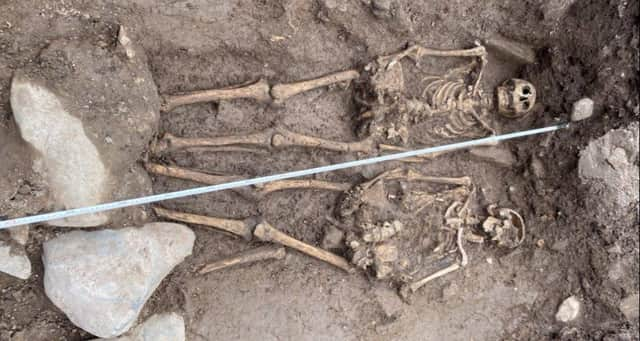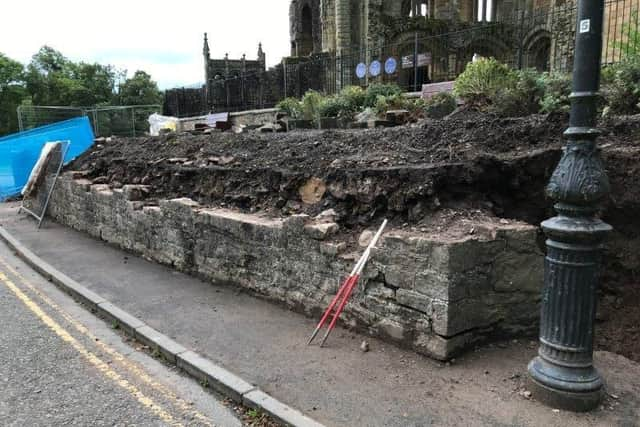New light shone on Jedburgh skeletons


The find immediately put on hold the £1m heritage-led project funded by Historic Environment Scotland and Scottish Borders Council to repair and refurbish the ramparts at the ancient site.
New light has now been shed on the human remains in a report by Heritage and Archaeological Research Practice Limited (HARP), which was commissioned by the council and the Jedburgh Conservation Area Regeneration Scheme (CARS).
Advertisement
Hide AdAdvertisement
Hide AdThe report states that the two skeletons – which were found under the ramparts, lying side by side on their backs – were a male, believed to be aged between 25-35 at the time of his death, and a 22-30-year old woman. Her feet were missing, which was possibly due to the disturbance of the remains during the initial building of the ramparts wall.


The male was holding a piece of metal, possibly a horseshoe nail, which could have been some sort of amulet.
However, a total of 496 human bone elements were recorded, including the cranium of an infant, in all around 28 individual people.
It appears that when the ramparts wall was built, the human remains had been displaced and discarded without much ceremony.
Advertisement
Hide AdAdvertisement
Hide AdA total of 378 animal bone elements were also recorded, including a minimum of 19 sheep or goats, three cows, one dog, one cat, one bird, one rodent and one pig, but the report states that “these numbers are almost certainly under-estimated”.
The report, by HARP’s Ian Hill, states: “Whilst it is clear that all human skeletal material uncovered was disturbed during the construction of the ramparts in some way, and therefore predate the construction of the ramparts in the late 18th to early 19th centuries, radiocarbon dating of the skeletal material retrieved from the intact human burials would help to provide a more accurate date of death of the individuals, and will help to identify at what time period the previous landscape was in use as a graveyard."
It concludes: “Consideration will also need to be taken on the re-deposition of the retrieved human skeletal material, however the final decision for this process will lie with Historic Environment Scotland and SBC.”